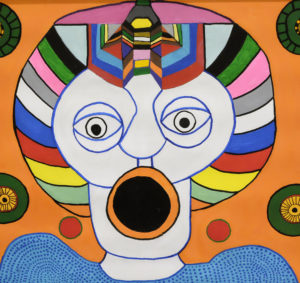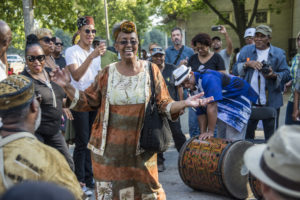Roscoe Mitchell — internationally renown composer, improviser, ensemble leader, winds and reeds virtuoso who has pioneered the use of “little instruments” and dramatic shifts of sonic scale in the course of becoming a “supermusician . . .someone who moves freely in music, but, of course, with a well established background behind . . .”* reveals […]
Jazz community upends Englewood’s bad rep
The 18th annual free Englewood Jazz Festival in south side Hamilton Park last Saturday (9/16) affirmed the best of Chicago’s grassroots culture, promoting an opposite image of this challenged neighborhood as a dangerous place — unless one fears powerful, creative music that speaks as directly as dance rhythms to its family of listeners. Produced on behalf of the Live […]
Fred Anderson, Chicago jazz hero, appreciated
As a teenager in pursuit of the avant garde, I took tenor saxophonist Fred Anderson, who died June 24 at age 81, as a hero upon first hearing him in 1966. It was at a Unitarian Church-run coffee house in downtown Evanston near Northwestern U., and attention clearly had to be paid to the long, fierce, unreeling, knotty […]
Happy Birthday, Fred Anderson
Fred Anderson, tenor saxophonist, is one of America’s less-acknowledged Jazz Masters, a man of deep musicality who has had enormous influence on three generations of players and listeners drawn by his brawny, free-wheeling Chicago sound. He turns 80 on March 22, and a weeklong celebration at the Velvet Lounge, his music room on the near-South […]


